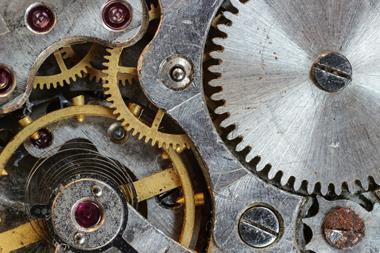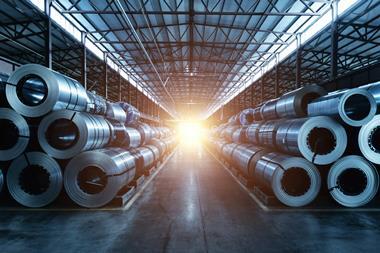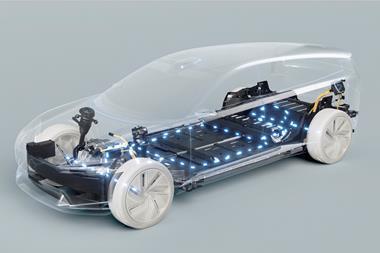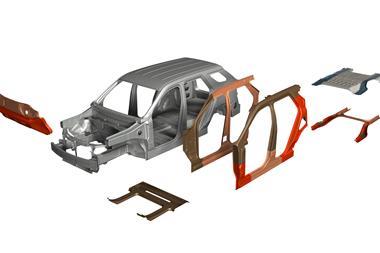PARTNER CONTENT
This content was paid for by ArcelorMittal and produced in partnership with Automotive Manufacturing Solutions
From simplifying assembly processes to slashing carbon emissions, ArcelorMittal’s innovative approach emerges as a key player in the race towards sustainable automotive manufacturing.
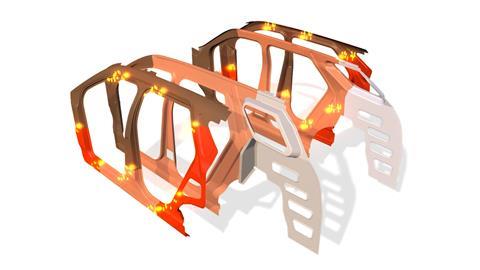
Climate change and the battle against global warming are compelling the automotive industry to transition to zero carbon emissions vehicles, with ambitious targets set for Scope 3 reductions. These projects focus on both emissions during the automotive use phase, as well as those originating from the supply chain, particularly from batteries, and materials such as steel and aluminium.
The shift toward electrification is prompting carmakers to rethink both design and manufacturing processes, incorporating innovative and affordable technologies into the manufacturing process.
How ArcelorMittal Multi Part Integration system is reducing the automotive steel footprint
ArcelorMittal, a leader in the automotive steel business, is proactively proposing innovative solutions to address these industry trends. Over the past two years, ArcelorMittal has developed the Multi Part Integration (MPI) concept to streamline manufacturing and reduce assembly complexity by maximising part integration. Successful projects have been implemented in three key regions: North America, China, and Europe. As an example, in China, we recently received “The Most Innovative Award of the 3rd Lightweight Conference” from Seres for our MPI Double Door Ring.
Challenges in designing and developing EV platforms
In January of last year, Jérome Favero, ArcelorMittal Global R&D Head of Automotive Steel Solutions, highlighted the challenges in designing and developing Battery Electric Vehicle (BEV) platforms. These challenges include the need to reinforce the structure to protect both heavy batteries and passengers, while maintaining cost-effectiveness and reducing the carbon footprint of the Body in White.
This article aims to underscore that Multi Part Integration could be a pivotal factor in driving design and manufacturing simplification. The Global RD team has introduced a concept at the car level resulting in a remarkable reduction of 46 parts per vehicle.
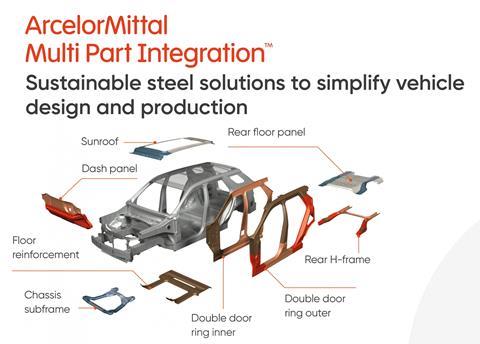
Measurable outcomes of Multi Part Integration
The Multi Part Integration (MPI) system has transformed automotive manufacturing, cutting down the assembly complexity from 59 parts to a lean 13 parts per vehicle (PPV); an impressive reduction of 46 parts (PPV). This transformative shift is accompanied by a substantial decrease in spot-welds, with a staggering reduction of 567 spot-welds for each unit.
Beyond the efficiency gains in manufacturing, the MPI intensive concept yields significant environmental benefits. Carbon dioxide equivalent (CO2eq) emissions during material and car production experience a noteworthy reduction, ranging from 14% to 31%, contingent on material sourcing practices.
The advantages extend to weight savings, where the car sheds 13.9kg (10%) per vehicle, contributing to a gross weight savings of 31.9kg (14%). Furthermore, the material utilisation rate also sees improvements, climbing from 70% to 75%.
The impact of the MPI intensive concept further extends to specific modules, with a focus on the rear module targeted by gigacasting. This approach brings about another substantial reduction in the Bodyshop surface floor, translating to a more streamlined and efficient overall manufacturing process. Emphasising labour efficiency gains, the implementation of 6 MPI modules results in a remarkable 30% reduction in Hours of Labour per Vehicle during assembly. These improvements have tangible financial benefits, with operational (Opex) and capital expenditure (Capex) savings resulting from process efficiencies. Engineering firms such as Bertrandt and Kuka have provided support in the calculation of these savings.
A comprehensive cost analysis, recently featured in an IHS/SP blog, highlights the economic viability of the MPI concept. The conclusion drawn is compelling — an assembled steel module proves to be more cost-effective than its aluminium counterpart. The collaborative efforts of engineering companies and thorough cost assessments underscore the transformative impact of MPI, not just in terms of efficiency but also in making sustainable and economically sound choices in the automotive manufacturing landscape.
Steel and Multi Part Integration solutions emerge as exceptionally competitive in realising carmakers’ simplification goals
The culmination of various analyses strongly affirms that Multi Part Integration solutions represent an exceptionally competitive avenue for realising the simplification goals set by carmakers.
An integral aspect of this evaluation involves the issuance of a Life Cycle Assessment (LCA) analysis specifically focused on Multi Part Integration. The results are particularly promising, showcasing a substantial advantage over alternative materials solutions, with potential gaps reaching up to 72%. The key driver behind this advantage lies in the low carbon emissions associated with steel compared to other materials. It is crucial to note that these percentages are contingent on factors such as the grid’s carbon intensity and the proportion of secondary materials considered in the assumptions. Notably, even under a “high” scenario for alternative materials, such as a 4t CO2/T for low carbon aluminium, Multi Part Integration maintains a significant environmental edge.
ArcelorMittal further enhances its commitment to sustainability by introducing Usibor, utilised in Multi Part Integration, along with XCarb recycled and renewably produced (RRP) in Europe. This combination not only reinforces the efficacy of MPI solutions but also leads to an additional reduction in carbon footprints. By synergising emissions reduction through MPI solutions and the adoption of low carbon steel solutions like X-Carb, ArcelorMittal offers a comprehensive and impactful approach.
Find out more here


































